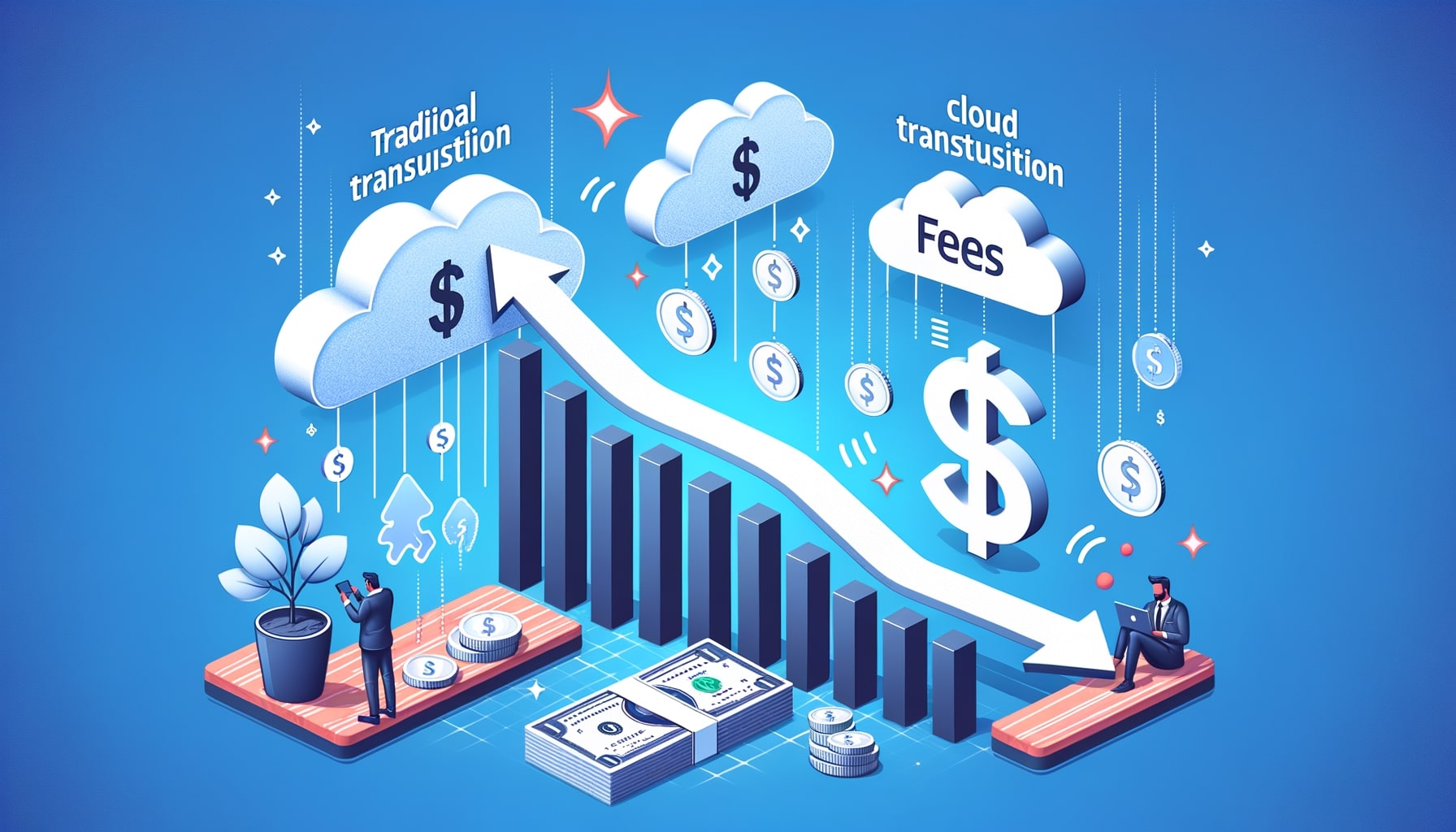How to Build a Scalable Cloud Payment Infrastructure
In today’s digital age, businesses are increasingly relying on cloud-based solutions to streamline their operations and enhance customer experiences. One critical aspect of any online business is its payment infrastructure. A scalable cloud payment infrastructure is essential for handling the growing volume of transactions, ensuring security, and providing a seamless payment experience for customers. This article will explore the key considerations, best practices, and technologies involved in building a scalable cloud payment infrastructure.
Key Considerations for Building a Scalable Cloud Payment Infrastructure
When building a scalable cloud payment infrastructure, several key considerations need to be taken into account. Firstly, it is crucial to assess the current and future transaction volume of your business. Understanding the scalability requirements will help determine the appropriate cloud service provider and architecture.
Secondly, security is of utmost importance in payment processing. Any vulnerabilities in the payment infrastructure can lead to data breaches and financial losses. Therefore, it is essential to implement robust security measures, such as encryption, tokenization, and secure network protocols, to protect sensitive customer information.
Thirdly, compliance with industry regulations and standards is vital for any payment infrastructure. Businesses must ensure that their cloud payment infrastructure adheres to Payment Card Industry Data Security Standard (PCI DSS) requirements and other relevant regulations to avoid penalties and maintain customer trust.
Choosing the Right Cloud Service Provider for Your Payment Infrastructure
Selecting the right cloud service provider is a critical decision when building a scalable cloud payment infrastructure. Several factors need to be considered, including reliability, scalability, security, and cost-effectiveness.
Reliability is crucial to ensure uninterrupted payment processing. The cloud service provider should have a robust infrastructure with high availability and redundancy to minimize downtime and ensure business continuity.
Scalability is another essential factor to consider. As your business grows, the payment infrastructure should be able to handle increased transaction volumes without performance degradation. The cloud service provider should offer scalable resources and flexible pricing models to accommodate your business needs.
Security is a top priority when it comes to payment processing. The cloud service provider should have stringent security measures in place, including data encryption, access controls, and regular security audits. Additionally, they should comply with industry standards, such as PCI DSS, to ensure the protection of customer data.
Cost-effectiveness is also a significant consideration. Evaluate the pricing models offered by different cloud service providers and choose the one that aligns with your budget and business requirements. Consider factors such as data storage costs, data transfer fees, and any additional charges for security features.
Designing a Secure and Resilient Cloud Payment Architecture
Designing a secure and resilient cloud payment architecture is crucial to protect sensitive customer data and ensure uninterrupted payment processing. The architecture should be designed with fault tolerance, scalability, and security in mind.
To achieve fault tolerance, the payment infrastructure should be designed with redundancy at every level. This includes redundant servers, databases, and network connections. By eliminating single points of failure, the architecture can withstand hardware failures and ensure continuous availability.
Scalability is achieved by designing the architecture to handle increasing transaction volumes without performance degradation. This can be achieved through horizontal scaling, where additional servers are added to distribute the load, or vertical scaling, where resources are upgraded to handle increased demand.
Security should be a top priority in the payment architecture. Implementing encryption techniques, such as SSL/TLS, ensures that sensitive data is transmitted securely over the network. Additionally, tokenization can be used to replace sensitive data with unique tokens, reducing the risk of data breaches.
Implementing Payment Gateways and APIs in Your Cloud Infrastructure
Payment gateways and APIs play a crucial role in facilitating secure and seamless payment processing in a cloud infrastructure. Payment gateways act as intermediaries between the merchant and the payment processor, handling the authorization and settlement of transactions.
When selecting a payment gateway, consider factors such as supported payment methods, integration options, and security features. The payment gateway should support a wide range of payment methods, including credit cards, digital wallets, and alternative payment methods, to cater to diverse customer preferences.
Integration options are also important to ensure seamless integration with your cloud infrastructure. Look for payment gateways that offer well-documented APIs and software development kits (SDKs) for easy integration with your applications and systems.
Security features provided by the payment gateway are crucial for protecting customer data. Look for features such as tokenization, fraud detection, and secure data storage to ensure the highest level of security in your payment infrastructure.
Leveraging Microservices and Containers for Scalability and Flexibility
Microservices and containers have revolutionized the way applications are developed and deployed in the cloud. By breaking down monolithic applications into smaller, independent services, microservices enable scalability, flexibility, and faster development cycles.
In the context of a cloud payment infrastructure, microservices can be used to modularize different components, such as payment processing, fraud detection, and reporting. Each microservice can be independently scaled based on demand, allowing for efficient resource utilization and cost optimization.
Containers, such as Docker, provide a lightweight and portable way to package and deploy microservices. Containers encapsulate the application and its dependencies, ensuring consistency across different environments and simplifying deployment and scaling processes.
Utilizing Big Data Analytics for Payment Processing and Fraud Detection
Big data analytics plays a crucial role in payment processing and fraud detection. By analyzing large volumes of transaction data in real-time, businesses can gain valuable insights into customer behavior, identify patterns, and detect fraudulent activities.
Payment processing involves analyzing transaction data to identify potential risks and ensure smooth payment flows. Big data analytics can help identify anomalies, such as unusually high transaction amounts or suspicious IP addresses, and trigger additional verification steps to prevent fraud.
Fraud detection is a critical aspect of any payment infrastructure. Big data analytics can be used to analyze historical transaction data, identify patterns of fraudulent activities, and develop predictive models to detect and prevent fraud in real-time.
Ensuring Compliance and Regulatory Requirements in Your Cloud Payment Infrastructure
Compliance with industry regulations and standards is essential for any cloud payment infrastructure. Failure to comply with regulations, such as PCI DSS, can result in severe penalties and damage to the reputation of the business.
To ensure compliance, businesses should implement security controls and processes that align with the requirements of relevant regulations. This includes implementing encryption, access controls, and regular security audits to protect customer data.
Additionally, businesses should regularly monitor and assess their payment infrastructure to identify any vulnerabilities or non-compliance issues. Conducting regular penetration testing and vulnerability assessments can help identify and address any security gaps.
Best Practices for Monitoring, Scaling, and Optimizing Your Cloud Payment Infrastructure
Monitoring, scaling, and optimizing your cloud payment infrastructure are essential to ensure its performance, reliability, and cost-effectiveness. Here are some best practices to consider:
- Implement comprehensive monitoring: Use monitoring tools to track key performance indicators, such as transaction volumes, response times, and error rates. This helps identify performance bottlenecks and proactively address issues.
- Automate scaling: Implement auto-scaling mechanisms to automatically adjust resources based on demand. This ensures optimal resource utilization and prevents performance degradation during peak periods.
- Optimize resource allocation: Regularly analyze resource utilization and adjust resource allocations based on usage patterns. This helps optimize costs and ensure efficient resource utilization.
- Regularly update and patch software: Keep your payment infrastructure up to date with the latest software updates and security patches. This helps protect against known vulnerabilities and ensures the stability of the system.
- Conduct regular load testing: Perform load testing to simulate high transaction volumes and identify any performance bottlenecks. This helps ensure that the infrastructure can handle peak loads without degradation.
- Continuously monitor security: Implement robust security measures, such as intrusion detection systems and log monitoring, to detect and respond to security threats in real-time.
FAQ’s
Q.1: What is a cloud payment infrastructure?
Answer: A cloud payment infrastructure refers to the architecture and technologies used to process and manage payments in a cloud-based environment. It involves the integration of payment gateways, APIs, and secure infrastructure to facilitate secure and seamless payment processing.
Q.2: Why is scalability important in a cloud payment infrastructure?
Answer: Scalability is important in a cloud payment infrastructure to handle the growing volume of transactions without performance degradation. As businesses grow, the payment infrastructure should be able to scale resources to accommodate increased demand and ensure a seamless payment experience for customers.
Q.3: What are some security measures to consider in a cloud payment infrastructure?
Answer: Some security measures to consider in a cloud payment infrastructure include encryption, tokenization, secure network protocols, access controls, and regular security audits. These measures help protect sensitive customer data and prevent data breaches.
Q.4: How can microservices and containers enhance a cloud payment infrastructure?
Answer: Microservices and containers enhance a cloud payment infrastructure by enabling modularization, scalability, and flexibility. Microservices allow different components of the payment infrastructure to be independently scaled, while containers provide a lightweight and portable way to package and deploy these services.
Q.5: How can big data analytics be used in payment processing and fraud detection?
Answer: Big data analytics can be used in payment processing and fraud detection to analyze large volumes of transaction data, identify patterns, and detect fraudulent activities. It helps businesses gain insights into customer behavior, ensure smooth payment flows, and develop predictive models to detect and prevent fraud.
Conclusion
Building a scalable cloud payment infrastructure is crucial for businesses to handle the growing volume of transactions, ensure security, and provide a seamless payment experience for customers. By considering key factors such as scalability, security, compliance, and choosing the right cloud service provider, businesses can design a secure and resilient payment architecture. Leveraging technologies such as microservices, containers, and big data analytics further enhances scalability, flexibility, and fraud detection capabilities.
By following best practices for monitoring, scaling, and optimizing the payment infrastructure, businesses can ensure its performance, reliability, and cost-effectiveness. With a well-designed and scalable cloud payment infrastructure, businesses can streamline their payment processes, enhance customer experiences, and stay ahead in the competitive digital landscape.










